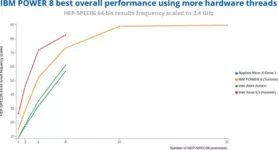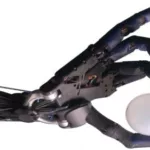I’m at IBM Edge this week and Power is clearly a major part of this event. Doug Balog General Manager of IBM’s Power Systems group was talking about disruption today and there are few things as disruptive and IBM’s unique approach to servers and technology. The focus of his talk is on the cloud and how Intel’s model and parts are obsolete. Doug is arguing that the elements of this move to the cloud have to do with Flexibility, Speed, Productivity, and Efficiency. As a result, the conversation has moved from a technology conversation to a business conversation. To address these business needs there are a variety of choices whether the service is on premise, public, a hybrid mix of both they have to be wrapped by an Ecosystem that allows flexibility.
IBMEdge Cloud Announcements
C-Model: This new group of products is designed to help customers optimize their implementation on premise while dropping operating costs by 50% while accelerating implementation. Designed for AIX and other IBM clients so they can take their infrastructure and migrate it to a cloud model. As part of this offering IBM is bundling IBM cloud assets and services so that customers can not only move to a cloud model but make use of IBM cloud services, many for free, that allow these customers to more cost effectively create hybrid solutions that meet IT security, reliability, and access policies. This should create a near seamless, low cost, reliable, and secure modern hybrid cloud option for IBM customers.
Staples and Bosch
IBM has always been really good at getting customers to stand up on stage and advocate IBM’s products and services. The customers brought to stage were Staples and Bosch. Staples was involved in major moves to analytics and cloud and attested to the fact that Power, for their needs, was the superior offering and this after extensive research. For Bosch SAP Hanna and large databases in particular pushed them to Power, from their perspective, stood ahead of the rest. They used the word “flexibility” a lot suggesting this was likely an overriding requirement driving the decisions.
Open Power Foundation
Doug moved to a discussion on the companies that had initially come together with the idea of an OpenPower foundation and the fact that there are now 250 members of this consortium providing Power based solutions. Next he spoke to the creation of a purpose built processor for deep learning which ties tightly to NVIDIA’s technology to provide what IBM believes is a 5x performance advantage over Intel for deep learning and analytics. They covered the systems that they launched a few weeks back that were custom tuned for a variety of next generation, intelligent, tasks.
Tencent, Rackspace, Google
Apparently Tencent, one of the most powerful cloud providers in China has announced they are moving from SPARC to Power for SPARC programing loads. Google and Rackspace are working together to advance the specifications for Power9, due next year, and enable workloads typically done on other platforms to run effectively on Power.
Moore’s Law Is Dead
IBM argued that Moore’s law was dead, technology has reached a level where shrinking is having declining returns and that future performance advances require collaboration between companies. It strikes me that this less a statement on Moore’s law but a statement against Intel’s model. At the heart of this is the idea that this idea that there is a technology vendor on one side and technology users at the other is obsolete. Instead, to advance, IBM argued that all of these folks must work as a team so that rather than optimizing on margins you instead optimize on collaborative advancement. Innovation must both start at the processor and be collaborative from the start. They believe this can provide, on average, an 80% performance advantage over Intel for these new loads.
Wrapping Up: It’s A Revolution
Doug made a compelling case that the world of today isn’t really like the world of last decade and certainly vastly different than last century. Now systems have to increasingly think, to handle the related load and perform adequately they have to process massive amounts of data in parallel because doing it linearly has hit a wall. Finally, that the only way to address these new opportunities with even a chance of success is to change from a tech vendor hand me down strategy to a collaboration strategy that starts with the processor and moves across the entire eco-system. In a way this is yet another IBM revolution and IBM made a compelling argument for the rest of us to get on board.








